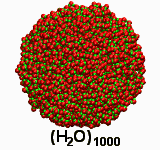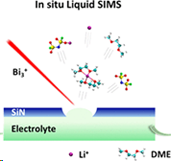Modeling of physicochemical processes accompanying the chemical analysis of organic materials with the SIMS technique using new cluster projectiles.
Duration: 2020 - 2022


The project includes a group of research aimed at modeling the phenomena accompanying the interaction of the stream of cluster particles with the surfaces of organic materials and biological structures. Rapid progress in miniaturization that has occurred during the last several years led to a significant interest in studies of physical and chemical phenomena that occur in devices with dimensions not much larger than dimensions of individual atoms. This interest resulted in a quest for developing experimental techniques that would be able to measure the geometrical structure and chemical composition in this scale. Secondary Ion Mass Spectrometry (SIMS) and Secondary Neutral Mass Spectrometry (SNMS) are examples of such techniques.

The aim of the project is to investigate the physicochemical phenomena accompanying the spatial analysis of the chemical composition of the surface of organic materials and biological structures using the SIMS and SNMS techniques. In particular, we will focus on the processes emerging in novel analytical setups based on large, chemically complex cluster projectiles. Larger and more chemically complex projectiles will increase the spatial accuracy (better focusing of the beam) and the sensitivity (more efficient ionization and emission of undamaged molecules) of SIMS / SNMS techniques when studying organic systems and biological structures. Interactions of such clusters with surfaces lead to the emergence of new ways of energy deposition in the material, as well as new processes leading to the emission of molecules from the surface. These phenomena have not been studied theoretically so far. Part of our research will be focused on modeling ion solvation processes. We will focus on the phenomena occurring during the SIMS analysis of alkali ion complexes in selected non-aqueous electrolytes. Understanding these phenomena is critical because of their impact on many important chemical, biological, and environmental processes.
The research tool are computer simulations based on the formalism of molecular dynamics (MD). We believe that the proposed research will broaden our knowledge of ion-surface interactions. They will also support the ongoing efforts of the SIMS / SNMS community to establish the most optimal experimental conditions for performing 3D chemical imaging of organic and biological structures.

